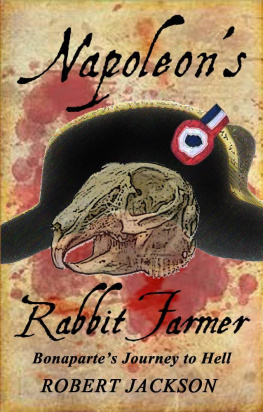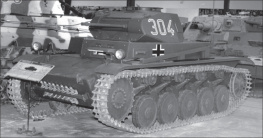NAPOLEONS
RABBIT FARMER
By
Robert Jackson
1st Kindle Edition
Copyright Robert Jackson 2012
The Author asserts the moral right to be identified as the author of this work
All rights reserved.
No part of this publication may be reproduced, stored in a retrieval system, or transmitted, in any form or by any means, electronic, mechanical, photocopying, recording or otherwise, without the prior permission of the publishers.
Disclaimer: This book has been written for entertainment purposes only. All references to characters and countries should be seen in this light. The book is based on historical accounts but draws on conspiracy theories surrounding Napoleon Bonaparte. Any resemblance to actual living persons is purely coincidental.
Cover design: Ming Cheung
ebook by EBooks by Design
www.ebooksbydesign.co
Dedication
For Gordon and Rosalie
For Julie, Aidan, Ben and Elliot
And for David Brett
Contents
Prologue
St Helena
14-15 October 1840
The corpse was perfectly preserved. There was no sign of the horrors of death, only the expression of a long, restful sleep. Swelling had restored a roundness to the face and a delicate hand with claw-like nails was clasping a black, folded three-cornered hat. The green jacket with red collar was slightly faded, the buttons tarnished and the gold epaulettes and decorations had lost their lustre, but the famous uniform was still fit for the coming parade.
Crowded around the coffin that had just been broken open after 19 years buried in the sub-tropical soil were some of those who had been at Napoleons passing. They had travelled 5,000 miles to take their Emperor home.
The French party gazed upon the body in awe. Napoleons head was resting gently on a cushion, his eyelids closed and there was a bluish-grey stubble on his chin. Three, bright white incisors could be seen through a receding upper lip and the skin of the nose hung upon the bone. The Emperors knee-high black boots had split, revealing the twisted nails of the smaller toes on each foot. But these were the only remarkable changes to a corpse which had not been embalmed. Next to his body were two silver jars containing his heart and stomach.
British army sappers had started work to open the grave in Geranium Valley at midnight, directed by a captain of the Royal Engineers. They laboured under a constant drizzle by torch and lantern light. Sentries had been posted on the surrounding rocky slopes and the French officials, not mixing with their British counterparts, stayed to watch every swing of the pick, collecting discarded flowers from the graveside as souvenirs. First to be pulled aside were the iron railings and three slabs of stone, six inches thick, which guarded the plot at the foot of two weeping willows. Then, in three hours, the clay and stones that filled the vault were shovelled out. The six bare-headed soldiers removed seven feet of spoil before they hit the solid concrete sealing the tomb. Sparks flew from their picks as they tried to crack the one-foot-thick barrier that had been strengthened with iron rods to prevent intrusion. After four and half hours of back-breaking toil, the soldiers finally cracked it, exposing a large slab of stone that had been cemented to the walls of the vault. This join had to be broken before ropes could be attached to the slab for it to be lifted with block and tackle. When this was done, the muddy wood of the outer coffin was exposed. All those watching removed their hats and a French priest came forward to sprinkle holy water before looking to the grey sky and reciting De profundis. The working party rested under the trees in the damp morning light while the leader of the French party, Count Rohan Chabot, took measurements of the tomb. At 10.20am, hooks and straps were attached to the casket and it was raised by the rope and pulley of the crab winch and carried to a blue and white-striped tent which had been turned into a chapel with large crucifix.
The priest with two young choristers took up position at the foot of the coffin and the assembled party of French officials, English soldiers and black labourers removed their hats while he conducted a mournful service in Latin.
At its completion, two engineers took saws to the ends of the outer mahogany casket. This gave access to a second lead coffin. Two British officers entered the tent and were acknowledged by Chabot before the sappers began to cut through the metal joins. Smoke filled the humid canopy as another mahogany casket was revealed with damaged screws. After some time, these were removed to reveal the final tin chamber containing the Emperors remains. It was 1.15pm and the tension built when the engineers started to remove the tin lid. To gasps from the audience a white, ghost-like cloud emerged from inside. But this was not the spectre of the warrior who had once ruled Europe, just the coffins satin lining which had become detached and was now shrouding the body.
Louis Marchand, Napoleons chief valet de chambre during his exile on this black, rocky South Atlantic outcrop, broke down and cried at the sight of his master. Marchand, who had been a young man of 24 when he had travelled with the Emperor to his island prison, whispered to his companions: It is more like him than at his death. He is at peace.
The French had arrived at St Helena on the frigate la Belle Poule, commanded by King Louis Philippes third son, the Prince de Joinville. It was escorted by the corvette la Favorite and joined by LOreste. Among the party standing before the opened coffin were Napoleons companions, the generals Bertrand and Gourgaud, and the ships surgeon Remy Guillard.
The prince had stayed away, as the British had insisted on managing the exhumation which was being carried out on the anniversary of the Emperors arrival at St Helena in 1815. The prince had visited the islands governor, Major General George Middlemore, to gain a final assurance that the British were willing to surrender their prisoner and then went to see for himself the peaceful valley and spring that was Napoleons resting place. He also made the climb to Longwood House, the former farm where the Emperor had spent his final years. A windmill had been built there and a threshing machine installed in the room where he had died.
The ships surgeon examined the body from head to foot, prodding Napoleons face and torso for two long minutes. The eyeballs have lost little of their fullness and form, said Dr Guillard. His cheeks are very white. He picked up the first silver vessel containing the preserved heart and proposed it be opened for inspection. This sparked an angry reaction from Gourgaud, who could take no more. Guillard, you are going too far, he snapped. Close the coffin. Shut it now. You must show respect for His Majesty.
The doctor nodded, replacing the satin lining and spraying it with creosote to keep the humidity out. He put back the tin and mahogany lids and called for the engineers to reseal the lead coffin with molten metal. The French had brought with them an elaborate ebony coffin, made in Paris, and bearing the inscription Napoleon in golden letters, and a rich purple velvet pall embroidered with golden bees.
The Emperors remains were placed inside the new coffin and this was in turn put in an oak sarcophagus. Making a combined weight of 2,600 pounds, it needed 43 gunners to lift it on to the hearse, the converted carriage of a former governor which had been decorated with plumes of black feathers at each corner. The procession to the quay at Jamestown did not start until 3.30 in the afternoon and in the heavy rain, the four black horses struggled to get the load moving. It was headed by a detachment of the local militia, soldiers of the 91st Regiment and the gunners from the Royal Artillery. Following them were the priest and the choristers, bearing a crucifix in front of the hearse. Holding the four corners of the pall were Bertrand, Gourgaud, Marchand and Baron Emmanuel de Las Cases, who was a teenager when the Emperor was exiled. Napoleons servants Saint Denis, Noverraz, Pierron, Archambaud and Coursot walked behind. To the sound of minute guns, the frail and poorly governor Middlemore led a large number of French and English officers on the three-and-a-half-mile journey. Both sides of the road were lined with soldiers of the garrison, their arms reversed, along with crowds of residents and visitors. The hearse was so heavy that on the steep descents to the harbour, soldiers had to hold it back with chains. It took nearly three hours for the procession to reach Jamestown, a scattering of buildings tightly-squeezed between two mountains. Alternate gun salutes fired from the island batteries and la Belle Poule, at anchor several hundred yards off shore, greeted the hearse. As there was no harbour the French ships lowered their launches into the water, with one commanded by the Prince de Joinville, who had been waiting in full uniform for the official hand over.













